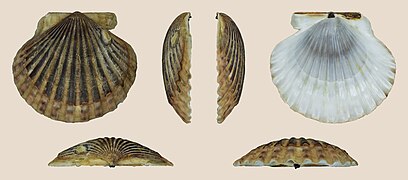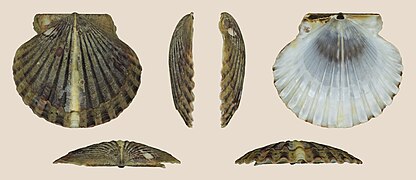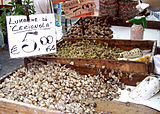| Argopecten irradians Temporal range: | |
|---|---|
 | |
| A live Argopecten irradians | |
| Scientific classification | |
| Domain: | Eukaryota |
| Kingdom: | Animalia |
| Phylum: | Mollusca |
| Class: | Bivalvia |
| Order: | Pectinida |
| Family: | Pectinidae |
| Genus: | Argopecten |
| Species: | A. irradians |
| Binomial name | |
| Argopecten irradians (Lamarck, 1819) | |
| Subspecies | |
See text | |
 | |
| From Bermuda, at Milan Natural History Museum | |
Argopecten irradians, formerly classified as Aequipecten irradians, common names Atlantic bay scallop, bay scallop, and blue-eyed scallop, is a species of scallop in the family Pectinidae. An edible saltwater clam, it is native to the northwest Atlantic from Cape Cod to the Gulf of Mexico.


